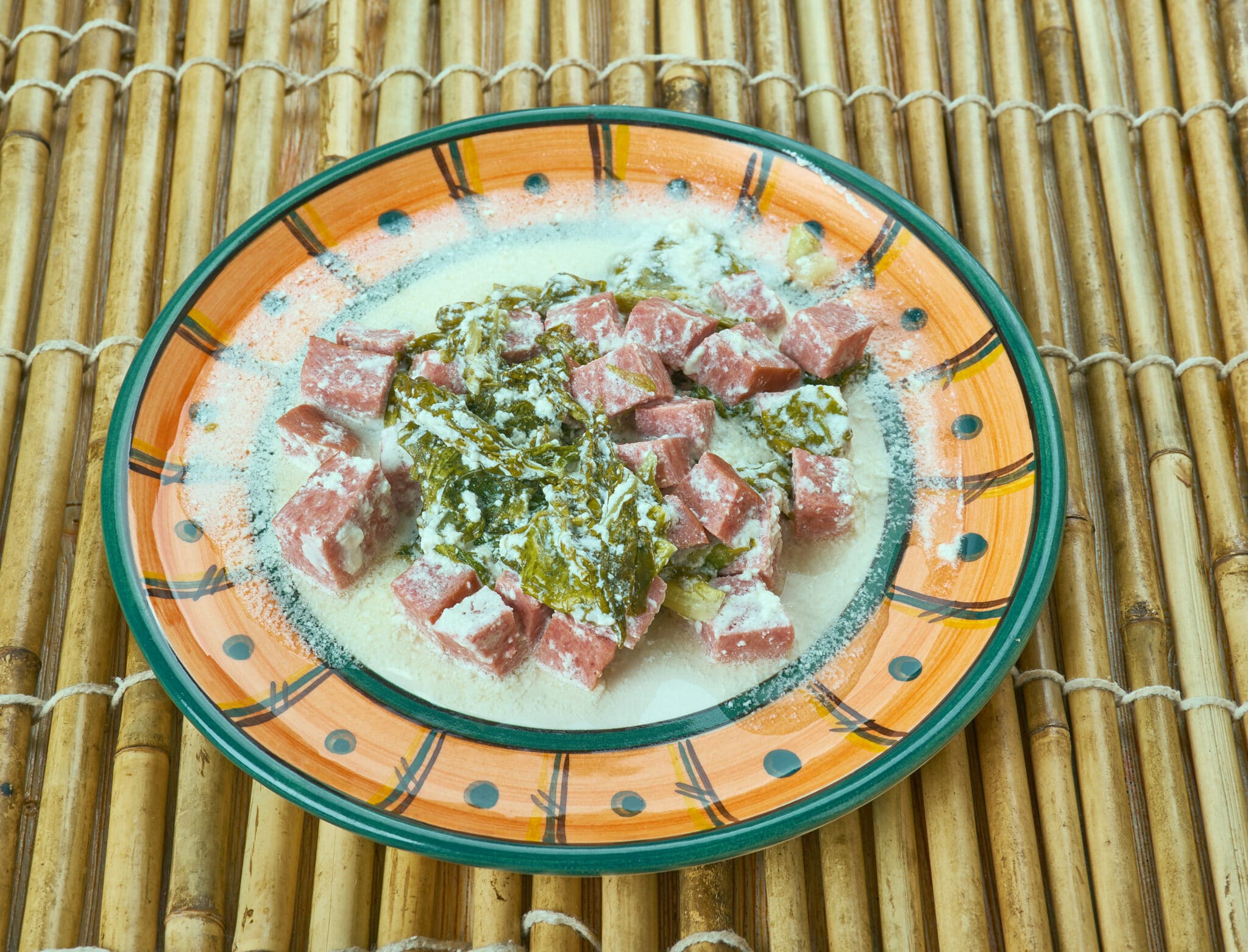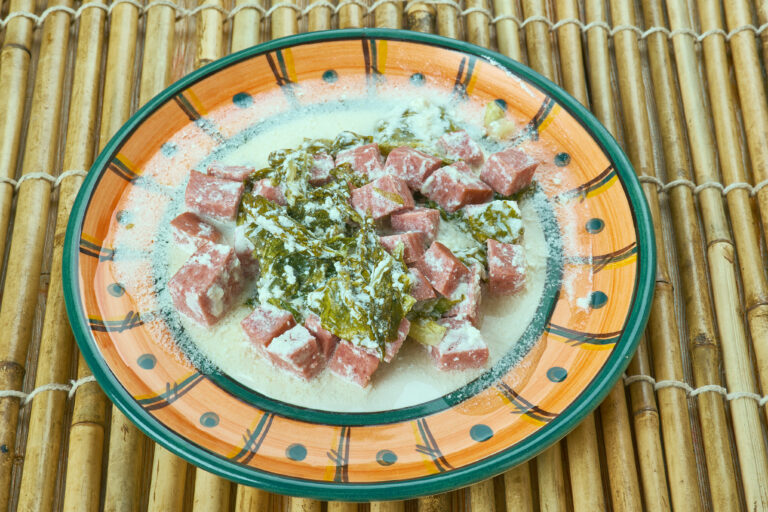
Palusami, a traditional Pacific Islands dish, epitomizes the harmony of simplicity and richness in island cuisine. This delicacy, popular in Tuvalu, combines natural ingredients in taro leaves and meticulously slow-cooked.
If you’re a fan of international cuisine, you can’t miss this guide by our Remitly team. Join us in celebrating the culinary heritage of our global customers.
The Origin of Palusami in Tuvalu
Palusami is a popular dish not only in Tuvalu, but also in all the islands of Polynesia. It’s born of the natural resources on the islands, such as taro leaves and coconut milk.
Over time, this dish spread throughout the region thanks to seafaring voyages, becoming a culinary link between the islands.
In Samoan mythology, there is a famous story about how the coconut emerged from an eel. Regional folklore also says the taro is considered a gift from ancient gods.
Ingredients and Traditional Preparation
The primary ingredients used in palusami are taro leaves and coconut milk. Taro leaves are large green foliage that come from the taro plant—a root vegetable popular across Asia and the Pacific Islands. Coconut milk adds creaminess to the dish while enhancing its flavor profile.
Preparing palusami involves wrapping a mixture of coconut milk (and sometimes meat or fish) inside layers of taro leaves.
These bundles are then placed into an earth oven known as an ‘umu’. Heated rocks line this pit-style oven, which is then covered with banana leaves for insulation.
This slow-cooking method allows flavors to meld together beautifully over several hours, resulting in tender taro leaves soaked with creamy coconut milk.
Variations of this dish can be found across the Pacific Islands. In Samoa and Tonga, for instance, corned beef is often added to the coconut milk before wrapping in taro leaves.
A Simple Palusami Recipe
Would you like to try it? palusami is an easy-to-prepare dish and, moreover, it offers a delicious and satisfying taste. Below, we show you a basic recipe that you can try at home.
Ingredients:
- 12 large taro leaves
- 2 cups of coconut milk
- Salt to taste
Optional:
– 1 cup of diced meat or fish (if desired)
Preparation:
- Start by washing the taro leaves thoroughly under running water.
- If using meat or fish, season with salt and set aside.
- Lay out two taro leaves on a flat surface, one on top of the other.
- Pour about two tablespoons of coconut milk in the center of the leaves.
- If using meat or fish, add on top of the coconut milk.
- Fold the edges of the taro leaves towards the center, creating a bundle that encloses the filling.
- Repeat this process until all bundles are prepared.
- Place these bundles in a pot or slow cooker and pour over any remaining coconut milk.
- Cover and cook on low heat for about four hours until the taro leaves are tender and have absorbed most of the coconut milk.
Enjoy your homemade palusami as is, or serve it with steamed rice for a complete meal.
Serving Suggestions
Palusami is typically served as part of a larger feast during special occasions. It pairs well with other traditional dishes such as roasted pig or grilled fish.
The communal preparation process becomes even more significant during these events.
For many Tuvaluans living abroad, palusami evokes fond memories of home—of family gatherings around an ‘umu’, laughter echoing through the air as everyone pitches in to prepare the feast.
The Broader Cuisine of Tuvalu
Tuvaluan cuisine reflects its island setting—simple, fresh, and reliant on locally available ingredients.
Seafood Staples
Being an island nation, seafood plays an integral role in Tuvaluan meals. Fish such as tuna, grouper, and snapper are often grilled or baked in banana leaves with local herbs and spices.
Root Vegetables
Root vegetables like taro root and breadfruit are also common components in many dishes due to their availability throughout the year.
Coconut: A Versatile Ingredient
Coconut is another staple ingredient in Tuvaluan cuisine. It’s used in various forms—milk, oil, and fruit—to add richness and flavor to dishes.
Traditional Cooking Methods
Traditional cooking methods like earth ovens (‘umu’) are still widely used for slow-cooking meals. This method imparts a unique smoky flavor to the food that’s hard to replicate with modern cooking techniques.
More about Tuvalu
Tuvalu, a small island nation in the Pacific Ocean, is home to around 11,000 people. The population is predominantly Polynesian, and the community is known for its strong sense of togetherness and shared traditions.
Tuvaluans mainly practice subsistence farming and fishing, relying on the land and sea for their daily needs. They hold traditional customs and practices in high regard, and their way of life is deeply intertwined with the natural environment, community activities, and celebrations.
Visit the homepage, download our app, or check out our Help Center to get started.
